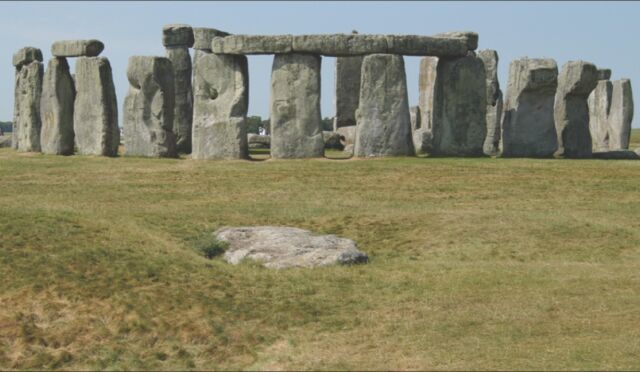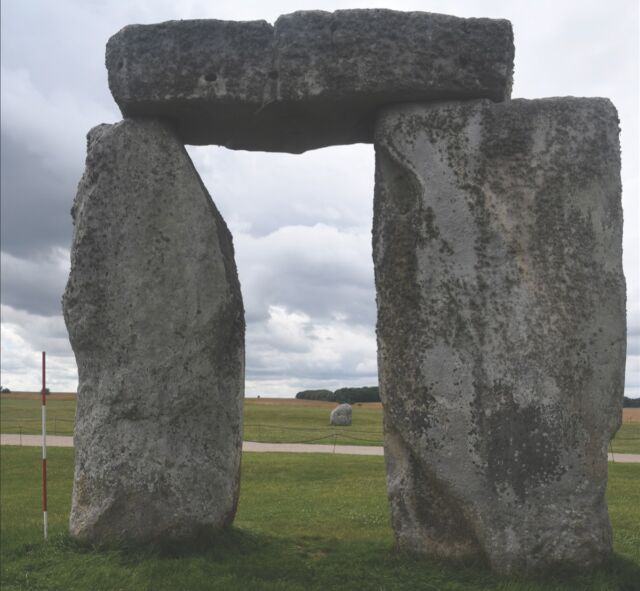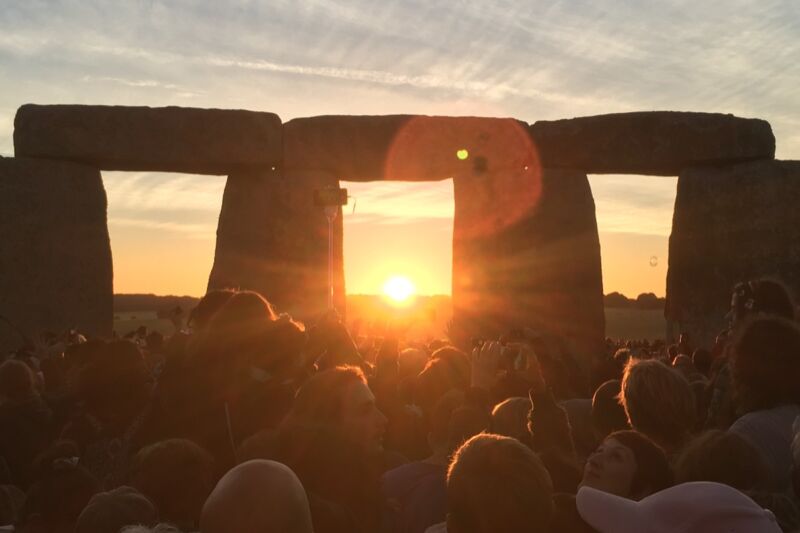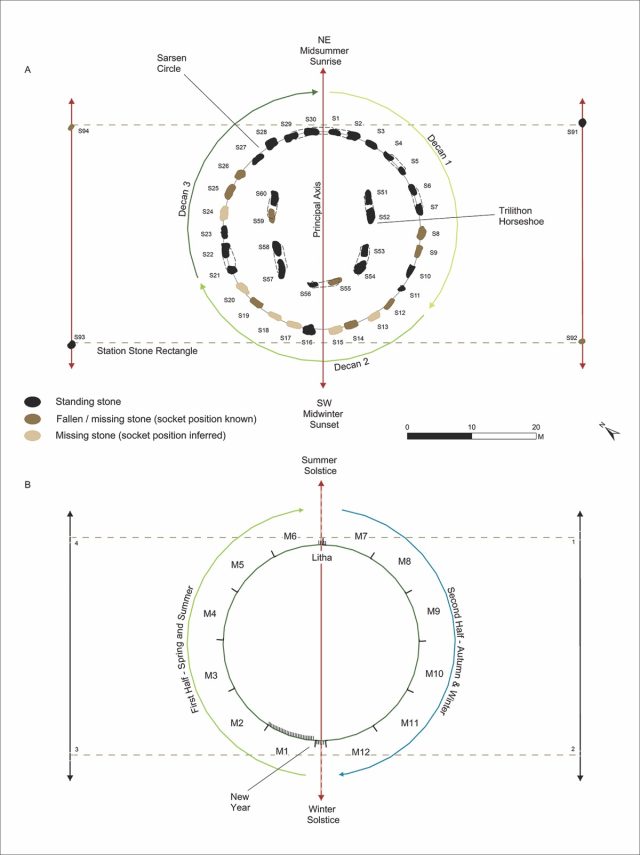Scholars have long speculated that the famed prehistoric monument Stonehenge might have served as some kind of calendar that helped local people predict eclipses, summer and winter solstices, the equinox, and other relevant celestial events. Now, a British archaeologist has concluded that the site was designed as a solar calendar, and he describes his system in a recent paper published in the journal Antiquity.
"Finding a solar calendar represented in the architecture of Stonehenge opens up a whole new way of seeing the monument as a place for the living—a place where the timing of ceremonies and festivals was connected to the very fabric of the universe and celestial movements in the heavens," Bournemouth University archaeologist Timothy Darvill said.
Stonehenge is located on Salisbury Plain in Wiltshire, England. It consists of an outer circle of vertical sandstone slabs (sarsen stones), connected on top by horizontal lintel stones. There is also an inner ring of smaller bluestones and, within that ring, several free-standing trilithons (larger sarsens joined by one lintel). Radiocarbon dating indicates that the inner ring of bluestones was set in place between 2400 and 2200 BCE. But the standing arrangement of sarsen stones wasn't erected until around 500 years after the bluestones.
No contemporary written records exist concerning the monument's construction, and scholars have pondered its likely use and cultural significance for centuries. Stonehenge's form (and maybe its purpose) changed several times over the centuries, and archaeologists are still trying to piece together the details of its story and the stories of the people who built it and gathered in its circles.

Darvill, for instance, has championed the hypothesis that Stonehenge was a place of healing. Alternatively, University College London archaeologist Michael Parker Pearson speculates that the site was part of a broader ritual landscape, serving as a funerary monument (a possibility first proposed in the 12th century by Geoffrey of Monmouth). People apparently buried their dead (after cremation) at the site for several centuries. Those burial sites are located in the circle of pits now called the Aubrey holes.
In 2019, Parker Pearson and several colleagues reported the results of their investigation into the quarry source for the bluestones. They found that the 42 bluestones came all the way from western Wales. Chemical analysis has even matched some of them to two particular quarries on the northern slopes of the Preseli Hills.
One quarry, an outcrop called Carn Goedog, seems to have supplied most of the bluish-gray, white-speckled dolerite at Stonehenge. And another outcrop in the valley below, Craig Rhos-y-felin, supplied most of the rhyolite. When another group of archaeologists studied the chemical isotope ratios in the cremated remains of people once buried beneath the bluestones, those researchers found that many of those people may have come from the same part of Wales between 3100 and 2400 BCE.

But the sarsen stones hail from much closer to home. Since the 1500s, most Stonehenge scholars have assumed the sarsen stones came from nearby Marlborough Downs, an area of round, grassy hills 25 to 30km (17 miles) north of Stonehenge which has the largest concentration of sarsen in the UK. A 2020 study by University of Brighton archaeologist David Nash and colleagues confirmed that.
As Kiona Smith reported for Ars at the time:
About 99 percent of the average sarsen boulder is silica, but the other 1 percent contains trace amounts of other elements, like aluminum, calcium, iron, potassium, magnesium, and others. That extra material is different in different sarsen sources, as it depends on the minerals in the ground where the rock formed. Nash and his colleagues used those trace elements as a geochemical fingerprint to match the Stonehenge sarsens to their most likely source.
Nash and his colleagues used portable X-ray fluorescence to analyze the chemical makeup of all 52 sarsens at Stonehenge (the only survivors of the 80 sarsens that once stood at the site). Each element emits a slightly different wavelength of light when hit by X-rays, and by measuring those emissions, researchers can map the composition of an object without damaging it.



3175x175(CURRENT).thumb.jpg.b05acc060982b36f5891ba728e6d953c.jpg)



Recommended Comments
There are no comments to display.
Join the conversation
You can post now and register later. If you have an account, sign in now to post with your account.
Note: Your post will require moderator approval before it will be visible.